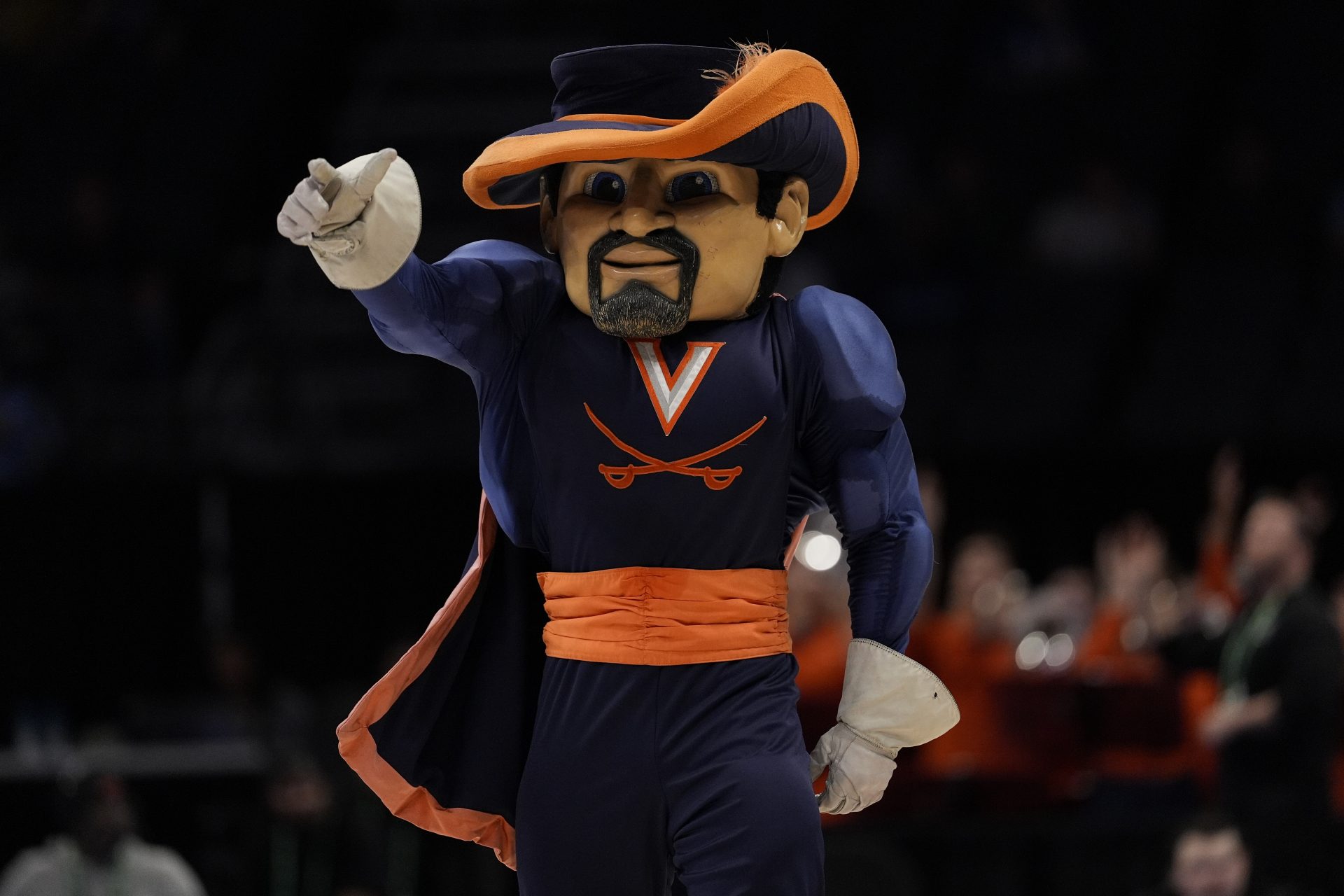The Virginia Cavaliers football team, for over a century, has been a name that cannot be ignored. With an all-time record of 683–642–48 (.515), the Cavaliers have proven themselves steady competitors on the national stage. They have also won five conference titles starting with the first one in 1908 and the division title in 2019. Meanwhile, their bowl game record stands at 8–13, but the Wahoos have never gone down without a fight.
And just like the team, their mascot has its ride through history. So, what’s the story behind that swashbuckling figure leading the charge?

What Is the Virginia Cavaliers Mascot?
There is no missing the man in boots, cloak, and wide-brimmed hat charging onto the field with a sword in hand. That man is none other than the Virginia Cavaliers’ mascot, the Cavman. He’s a costumed Cavalier, a nod to the English royalists of the 17th century. Sometimes, she even arrives on a horse, galloping into the stadium. But Cavman isn’t alone.
There’s also “Lil Hoo,” a pint-sized, orange-clad character, and the iconic mounted Cavalier, who literally leads the football team onto the field at home games. However, before there were swords and steeds, there were paws. Virginia’s mascot legacy actually began with a dog. A dog named Beta.
In the 1920s and ’30s, Beta was more than a campus pet. He was an icon of sorts. A black-and-white mongrel with a love for football and philosophy lectures, Beta attended classes so regularly his name was called during roll call. Once, Beta was even left behind in Athens, Georgia, post-game. Beta somehow managed to find his way back to UVA.
After Beta died in 1939, a new four-legged friend came along. The “Great Seal of Virginia.” With a slick black coat and a surprisingly cheeky personality, Seal made headlines during a 1949 game against Penn.
As 80,000 fans watched, Seal marched across the field and lifted a leg on the opponent’s megaphones. The crowd was all for it. UVA won, and Seal earned his place in Cavalier lore. When he died in 1953, more than 1,500 people joined his funeral procession. No dog has officially taken up the mascot mantle since. So how did Virginia get to the Cavman?
Why Was the Virginia Cavaliers a Cavman?
In 1947, Francis Bell was the first student to don Cavalier garb and ride into Scott Stadium. He and a fellow student, whose identity remains a mystery, brought the Cavalier image to life in a dramatic entrance during a game against Harvard. By 1963, the mounted Cavalier became a more permanent presence, thanks to the UVA Polo Club.
But when AstroTurf replaced grass in 1974, the horse had to go. That led to some experimental mascot moments, including an orange character known simply as “The ’Hoo”. Thankfully, the costumed Cavman that the world knows today made his debut in 1984 and quickly became the real MVP of the sidelines.
KEEP READING: History of the North Carolina Tar Heels Mascot
Then came the comeback. In 1989, during the Florida Citrus Bowl, the Cavalier on horseback galloped back into the spotlight. Since then, he’s been a permanent fixture at home games.
College Sports Network has you covered with the latest news, analysis, insights, and trending stories in college football, men’s college basketball, women’s college basketball, and college baseball!

